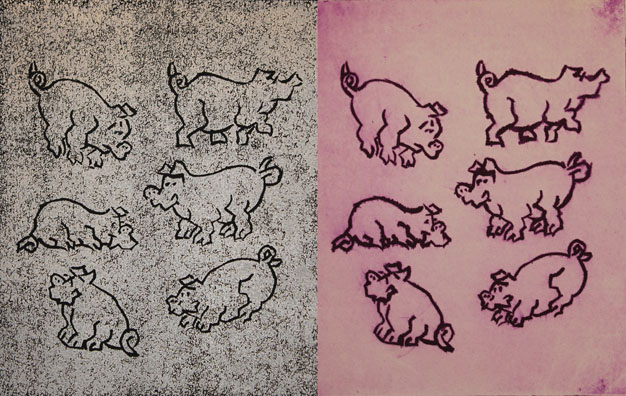Pigs - Block Print
Reverse Line and Block Intaglio

One difficulty in block printing - where you cut the image into a wood or lineoleum block - is making traditional line drawings where the lines are dark and the background is light. The most straightforward method is to carve away the background areas leaving the lines raised. You can click here to see an example of this type of block print.
The drawback, of course, is this takes a lot of effort and skill. You actually have to carve away most of the block - particularly if the lines are thin. So an alternative is to cut into the block where the lines will be, and - as the image on the left - print using white ink but on black paper.
Another way - which is rarely done - is to adopt the method of metal engravers for intaglio prints. That is, you ink the block, making sure that the ink is forced into the lines. Then you wipe off the ink from the raised areas. In this case you must print using a press and using wet paper (which forces the paper into the lines). Then you get an image like the one on the right.
Neither method is really suitable for commercial printing for books, magazines, or newspapers. Instead, before photoengraving became practical (in the late 19th and early 20th century), pictures in magazines were from wood engravings where the white background areas were indeed laboriously carved away from the dark lines.
It may come as a shock, but many of the block prints you see by famous artists were the products of skilled wood carvers, not the artists themselves. The artists would hand over their drawing, and the carvers would transfer it to the block and do the carving. Rarely, if ever, are the wood carvers or the printers acknowledged.